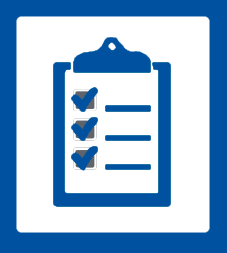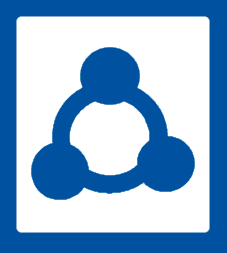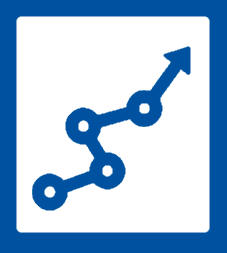Topic outline
-
-
In this topic, we'll review the development history of Cloud platforms, and why the use of Cloud became widespread in modern IT system architecture.
If we look at a little background of the history of computing, we see that computers were invented to help people with complex calculations. It's a long way from the invention of the first modern computer to a time when affordable personal computers entered people’s everyday lives.
And, of course, we have the greatest invention of the 20th century ... the internet.
-
What is Cloud or Cloud Computing?
There is no unique definition of what we mean by Cloud. However, as discussed in the reading below, the IT consultancy Gartner was one of the first to define Cloud computing, in 2008.
That definition has subsequently been slightly updated:
Cloud computing is a style of computing in which scalable and elastic IT-enabled capabilities are delivered as a service using Internet technologies.
This definition accurately pinpoints the key aspects of Cloud computing: scalability, elasticity, and delivered as a service over the Internet.
Scalability refers to the fact that ramping up computing and storage is very easy on the Cloud. This Cloud property is a contrast to on-premise computing. With a Cloud platform, the customer doesn't have to order machines, unwrap them, set them up, and connect them to their data centre. Anything is easily scaled up.
Elasticity, on the other hand, refers to the fact that this scalability goes both ways: it will also scale down when capacity is no longer needed.
More importantly, Cloud computing represents a shift in our mindset about how computing resourses are used to breakdown a complex IT system into services. Utility computing is another concept that is helpful to understand this mindset shift.
-
Watch
In this quick animated video, Stephen Fry explains the history of computer thinking and the revolution of utility in Cloud computing.
Changes to computer thinking 5m 39s (Closed captions available)
-
Why Cloud?
So, as we change our mindset on computing resources, let's look at the benefits of migrating onto the Cloud.
-
Watch
David Lithium is the Chief Cloud Strategy Officer at Deloitte Consulting.
In this video, he gives an overview of the key concepts of Cloud computing.
Cloud characteristics 4m 21s (Closed captions available)
Cloud characteristics from Learning Cloud Computing: Core Concepts by David Linthicum
.
-
Five essential characteristics of Cloud computing

On-demand self-service. This feature means that a customer can provision computing resources by themself. This contrasts with the traditional model of hosting by one of the large hosting providers or on-premise. In the past, it was necessary to order servers and software from vendors or hosting companies to get computing infrastructure. The customer would have to submit a purchase order and wait for someone to execute it. This was a slow process that didn't provide the desired agility and flexibility. It shouldn't be necessary to involve anybody else - it should happen automatically. Today some of the biggest Cloud vendors have services that need to be activated on request, which can take a while.
 Broad network access.
In practice, this refers to services being available through the Internet, because most Cloud computing is on a public Cloud. Basically, anyone with a laptop, table, or cell phone should be able to access the computing resources. This characteristic
rules out an on-premise data centre behind a company firewall, in which the network access does not need to be via the Internet. There could be other types of ways to connect to the Cloud, which we are beginning see in the area of IoT (Internet of Things). It
has also become common for cloud vendors to provide a dedicated fibre connection between the customer and provider data centre. Some vendors also offer their Cloud services in 'boxes' that are completely cut off from any network.
Broad network access.
In practice, this refers to services being available through the Internet, because most Cloud computing is on a public Cloud. Basically, anyone with a laptop, table, or cell phone should be able to access the computing resources. This characteristic
rules out an on-premise data centre behind a company firewall, in which the network access does not need to be via the Internet. There could be other types of ways to connect to the Cloud, which we are beginning see in the area of IoT (Internet of Things). It
has also become common for cloud vendors to provide a dedicated fibre connection between the customer and provider data centre. Some vendors also offer their Cloud services in 'boxes' that are completely cut off from any network.
 Resource pooling.
The intent here is that in Cloud computing, several customers use the same pool of computing infrastructure. They
don’t get one computer each.
This helps to save energy.
Resource pooling.
The intent here is that in Cloud computing, several customers use the same pool of computing infrastructure. They
don’t get one computer each.
This helps to save energy.
This is important in theory, but in practice, it's possible through Cloud providers to gain access to single dedicated machines, sometimes called bare metal or dedicated instances. Consequently, in practice, it's not an essential characteristic.
 Rapid elasticity.
This feaure might sound a bit odd, because how do elasticity and silicon computers fit together? Obviously, the point is not that the computers should bend around corners! The meaning is metaphorical. The service is like an elastic band that stretches when force is applied, and then retracts when there is no force. For example, if
a service like a website suddenly gets a lot more users because of a flash sale, it needs to be able to scale up the computing power to handle this quickly. Then, when the sale is over, it should scale back down. Be aware that
not all Cloud services automatically come with this feature. In fact, it often needs to
be built by the customer.
Rapid elasticity.
This feaure might sound a bit odd, because how do elasticity and silicon computers fit together? Obviously, the point is not that the computers should bend around corners! The meaning is metaphorical. The service is like an elastic band that stretches when force is applied, and then retracts when there is no force. For example, if
a service like a website suddenly gets a lot more users because of a flash sale, it needs to be able to scale up the computing power to handle this quickly. Then, when the sale is over, it should scale back down. Be aware that
not all Cloud services automatically come with this feature. In fact, it often needs to
be built by the customer.
 Measured service.
This feature basically means that the customer only pays for what they use, to avoid paying for a machine standing idle in a data centre. This should be transparent to the customer. In practice, the unit used to measure the service can differ
greatly between services. It could be time, storage, processing capacity, number of users, number of instructions, or any other measurable property of relevance to the service. The most common type of measurements are time, and number of users.
In practice, vendors don't always make the measurement as transparent as the National Institute of Standards and Technology (NIST) would like. It can be very difficult or impossible for a customer to validate the correctness
of the metering.
Measured service.
This feature basically means that the customer only pays for what they use, to avoid paying for a machine standing idle in a data centre. This should be transparent to the customer. In practice, the unit used to measure the service can differ
greatly between services. It could be time, storage, processing capacity, number of users, number of instructions, or any other measurable property of relevance to the service. The most common type of measurements are time, and number of users.
In practice, vendors don't always make the measurement as transparent as the National Institute of Standards and Technology (NIST) would like. It can be very difficult or impossible for a customer to validate the correctness
of the metering.
-
Watch
In this video, Stephane Maarek, a consultant and software developer, explains Cloud computing.
Cloud computing introduction 8m 7s (Closed captions available)
-
Watch
This short video has been produced as part of the Solutions Review 'Explainer' series. It focuses on the history and evolution of Cloud computing, and looks at recent platforms like AWS and Azure.
The evolution of Cloud computing 3m 14s (Closed captions available)
-